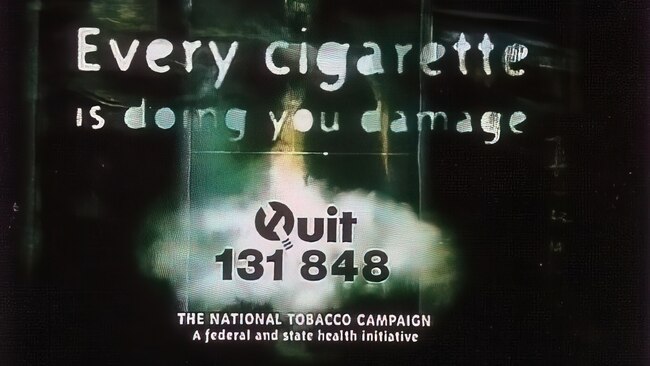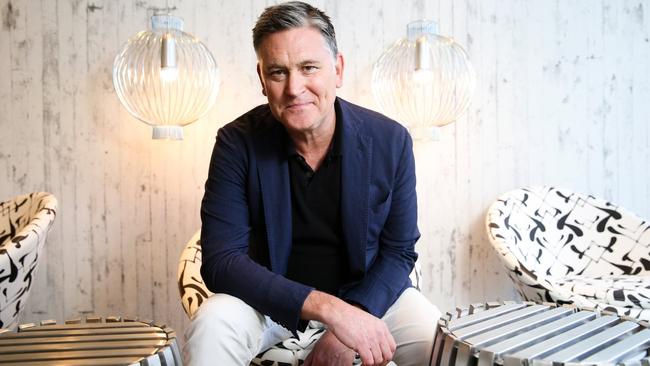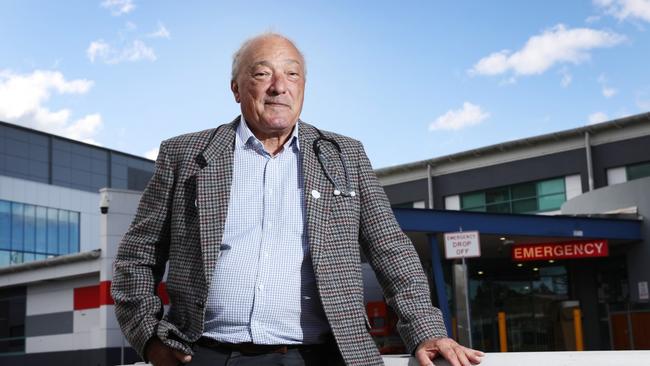Calls for urgent action on vape black market
Some of the key figures behind Australia’s world renowned national campaign against tobacco say they are alarmed by the rapid rise in people vaping and the ballooning black market.

Some of the key figures behind Australia’s world renowned national campaign against tobacco say they are alarmed by the rapid rise in people vaping and the ballooning black market.
Some of the key figures behind Australia’s world renowned national campaign against tobacco say they are alarmed by the rapid rise in people vaping and the ballooning black market.
Former federal health minister Michael Wooldridge – who served between 1996 and 2001 under then prime minister John Howard – unified state and territory bodies as well as the different anti-smoking groups behind the campaign.
Mr Wooldridge told The Weekend Australian the rising use of vapes and e-cigarettes was a disaster that risked unwinding 40-years of tobacco control in Australia.
“I would say with vaping there is a degree of urgency,” he said.
“We now have a million people vaping and in 12 months time we might have two million.”
Mr Wooldridge said the solution was in controlling, not prohibiting, vaping and that while he agreed with the current medical model the regulations needed to be enforced by both federal and state authorities.
“It’s just absolutely ridiculous,” he said.
“We’ve got a scheduled product that’s freely available in convenience stores and tobacconists who are just flouting the law.”
Vapes containing nicotine can only be purchased by customers with a valid prescription under laws introduced by the former Coalition government in October 2021 that sought to keep e-cigarettes available as an aid to quit smoking.
However black market vapes and e-cigarettes, most of which contain nicotine and are made in China, continue to be sold at tobacconists and convenience stores.
The National Tobacco Campaign, which launched in June 1997 and continues to this day, is considered one of the most successful public health campaigns in the world.
Matthew Melhuish as co-founder of advertising agency BMF was one of the brains behind the “every cigarette is doing you damage” campaign that included graphic images of the impact of smoking on the body.

Mr Melhuish said the campaign’s success lay in challenging an individual’s sense they could keep smoking and avoid cancer, as well as using graphic images to provoke a visceral response.
“We literally put a camera down someone’s throat and then took people inside the body and showed them the clogged up artery,” he said.
Also critical was stripping the veneer of cool from smoking and cigarettes and making people see smokers as people burdened with a pitiable addiction.
“The other thing we did was portray smokers accurately but also as slightly desperate people,” he said.
A recent review by British policy institute Cochrane found rates of quitting smoking were higher when people used vapes and e-cigarettes than when they used nicotine replacement therapies such as patches.
Australian Tobacco Harm Reduction Association founding chairman Colin Mendelsohn said the only way to eliminate the black market was to replace it with a legal regulated market, a model which was having success internationally.
“In New Zealand in the last few years since they legalised vaping and made it available from vape shops and general stores, the smoking rate fell by 33 per cent in two years, which is unprecedented,” said Dr Mendelsohn.
Labor MP and paediatrician Mike Freelander, who chaired an inquiry into the use and marketing of e-cigarettes and vapes, said federal and state and territory agencies needed additional funding to properly enforce the current regulations.
“This is a huge issue because I do not want the next generation addicted to nicotine like previous generations were,” he said.
“If people seriously think tobacco companies like British American Tobacco are promoting these for altruism, that’s a load of rubbish.
“They’re doing it to try and change their business models to addict more young Australians to nicotine.”

Australian National University professor Emily Banks from the National Centre for Epidemiology and Population Health said e-cigarettes could lead to addiction as well as causing poisoning, burns, trauma and lung injury.
She said vapes and e-cigarettes were being sold in shops as a consumer product because they weren’t labelled as containing nicotine on the packaging.
“How can we move from the current reality where there is widespread use among children and youths that’s not for smoking cessation?”
Drug and Alcohol Research and Training Australia founder Paul Dillon said parents and schools were struggling to deal with the rising use of vapes.
“This is not an issue that is going to disappear so we really do need to kind of find a way of dealing with it more effectively and we haven’t done that,” he said.
Federal health minister Mark Butler said he was concerned by the increased use of vapes among young people.



